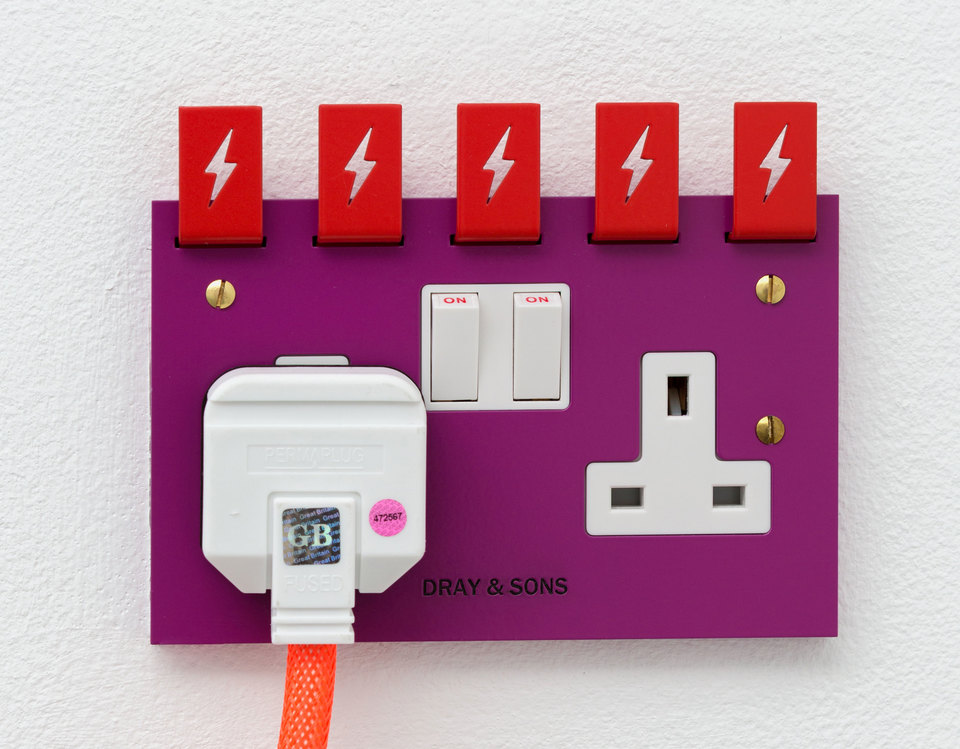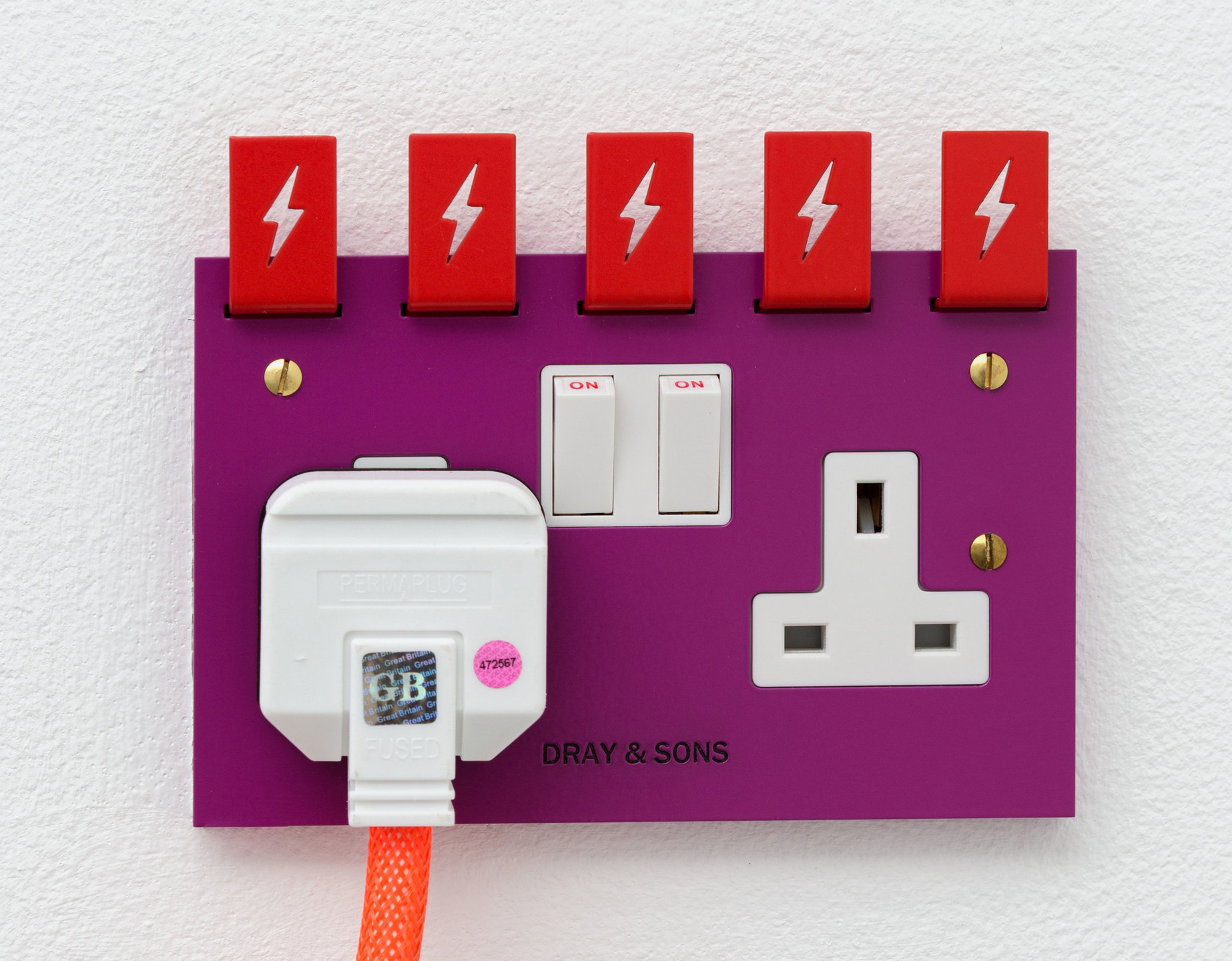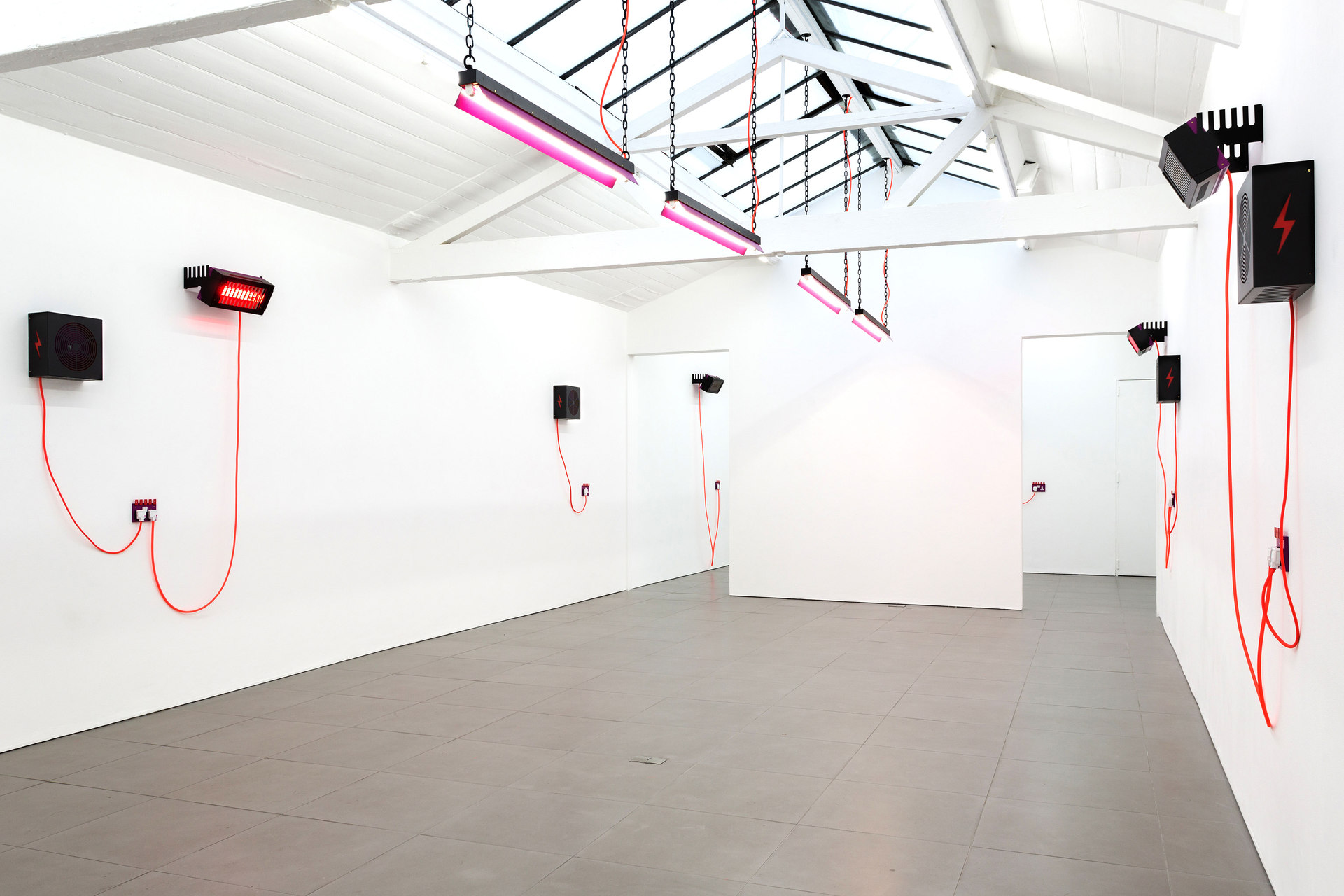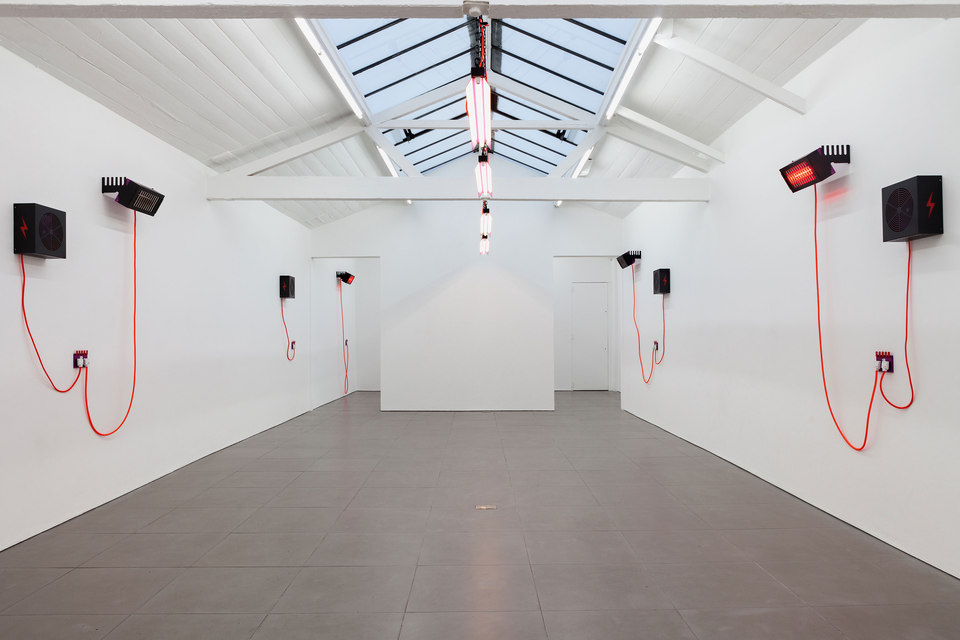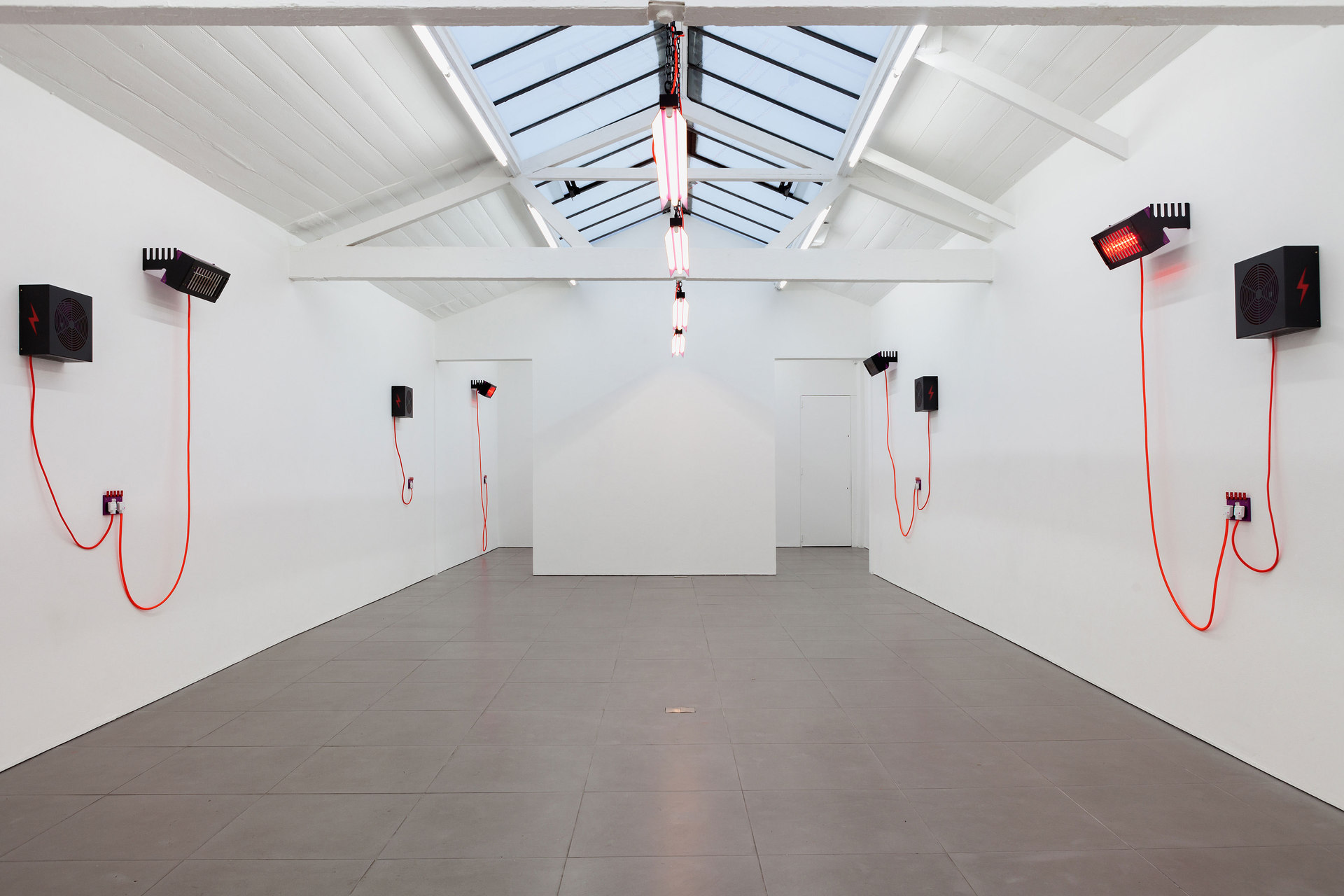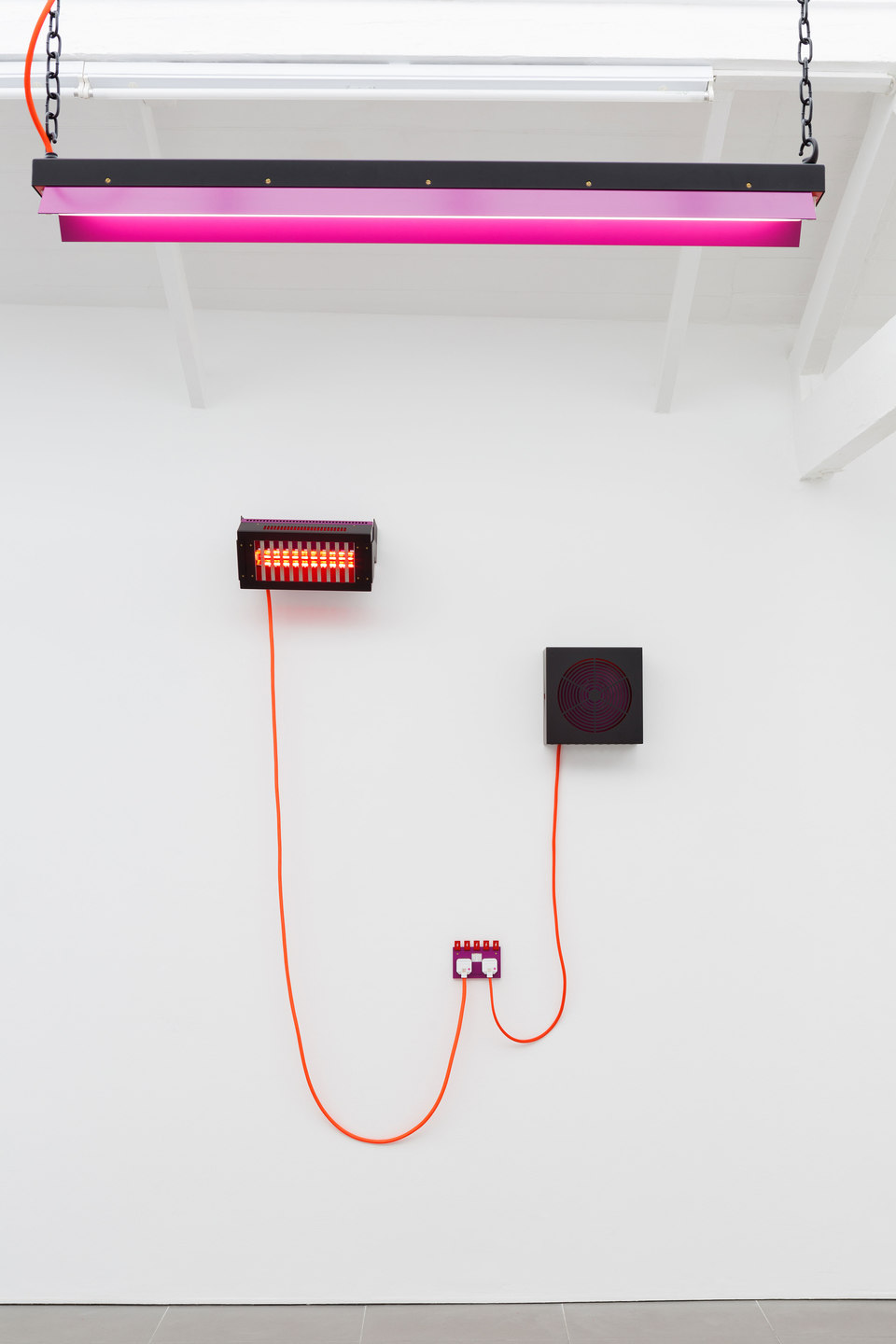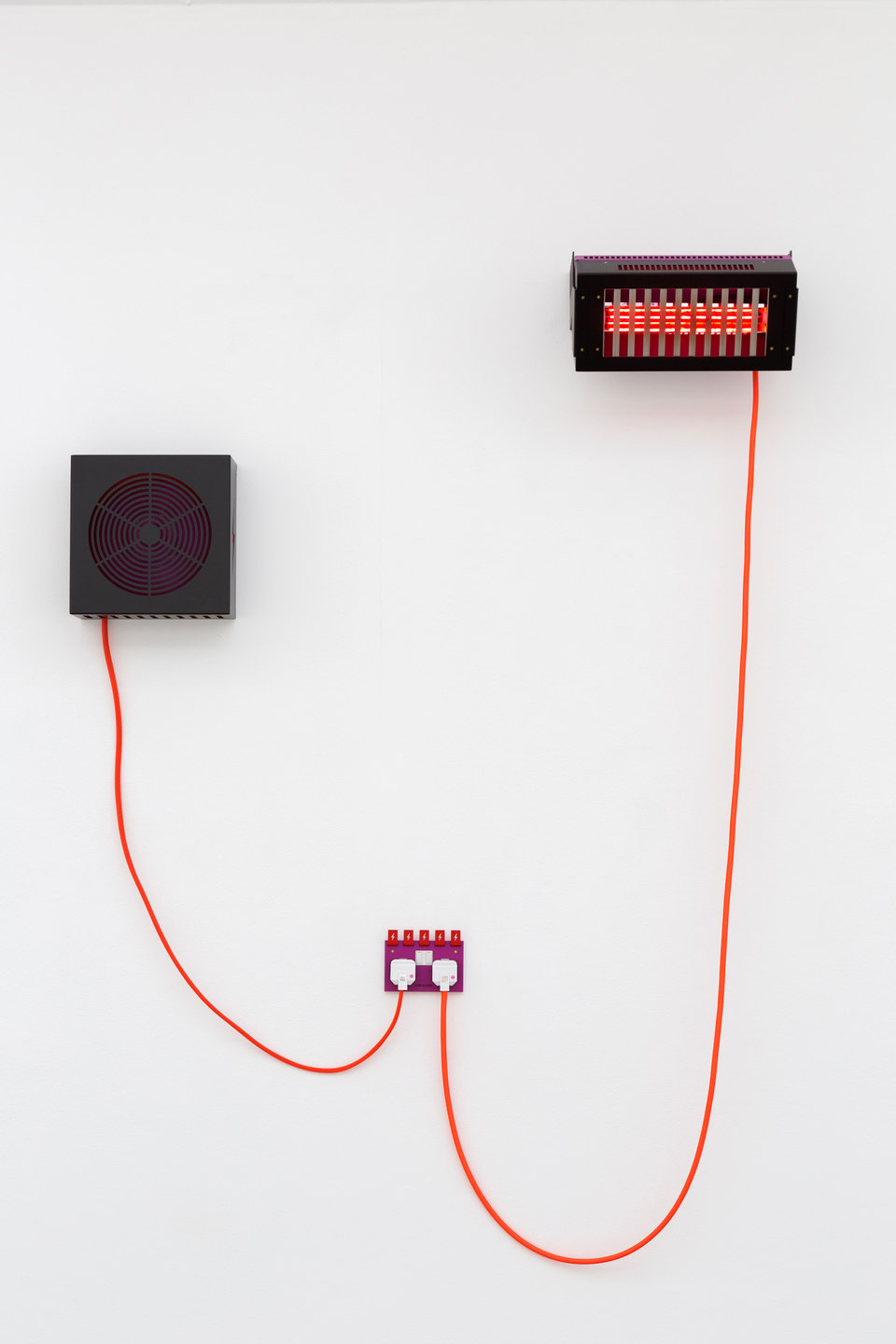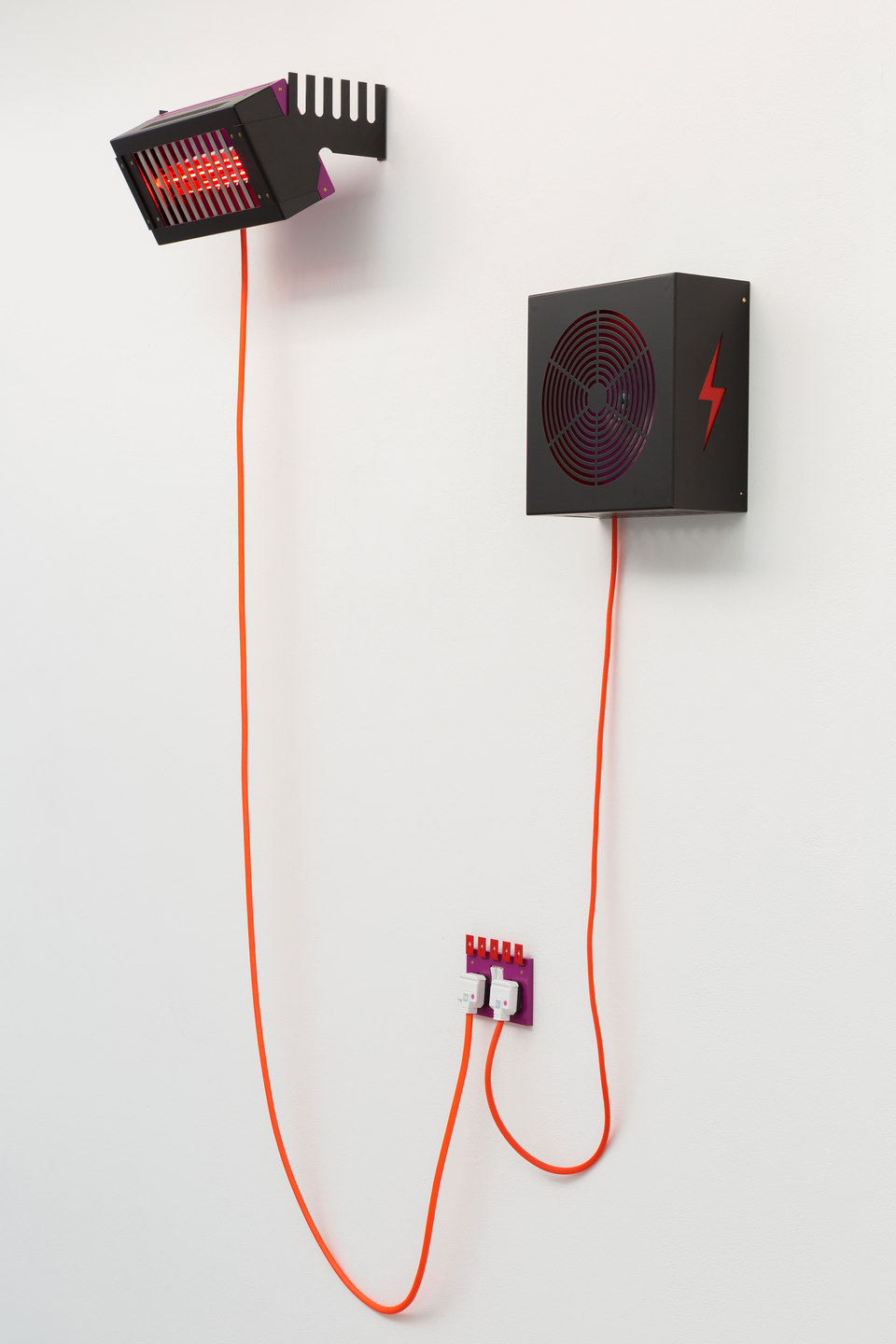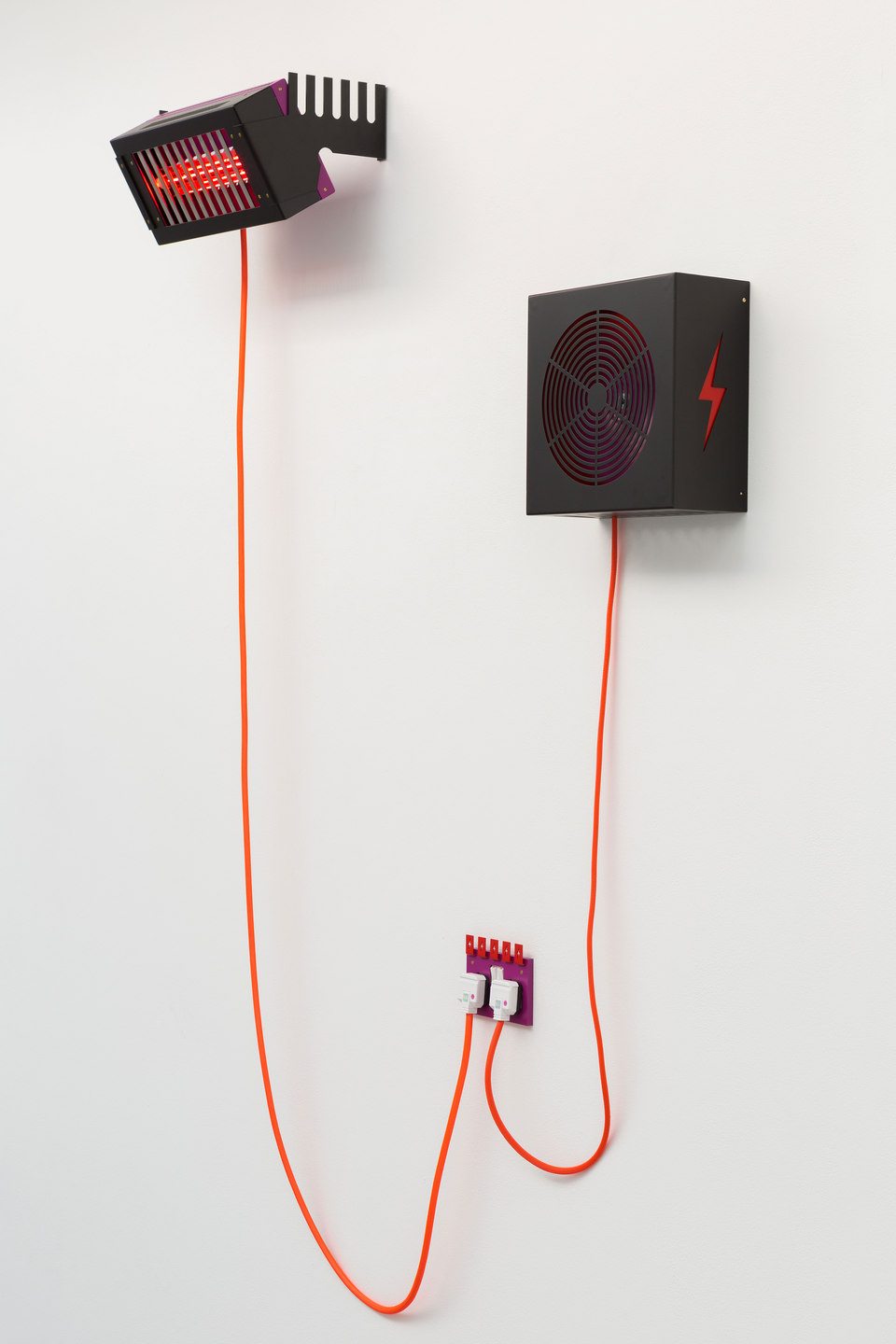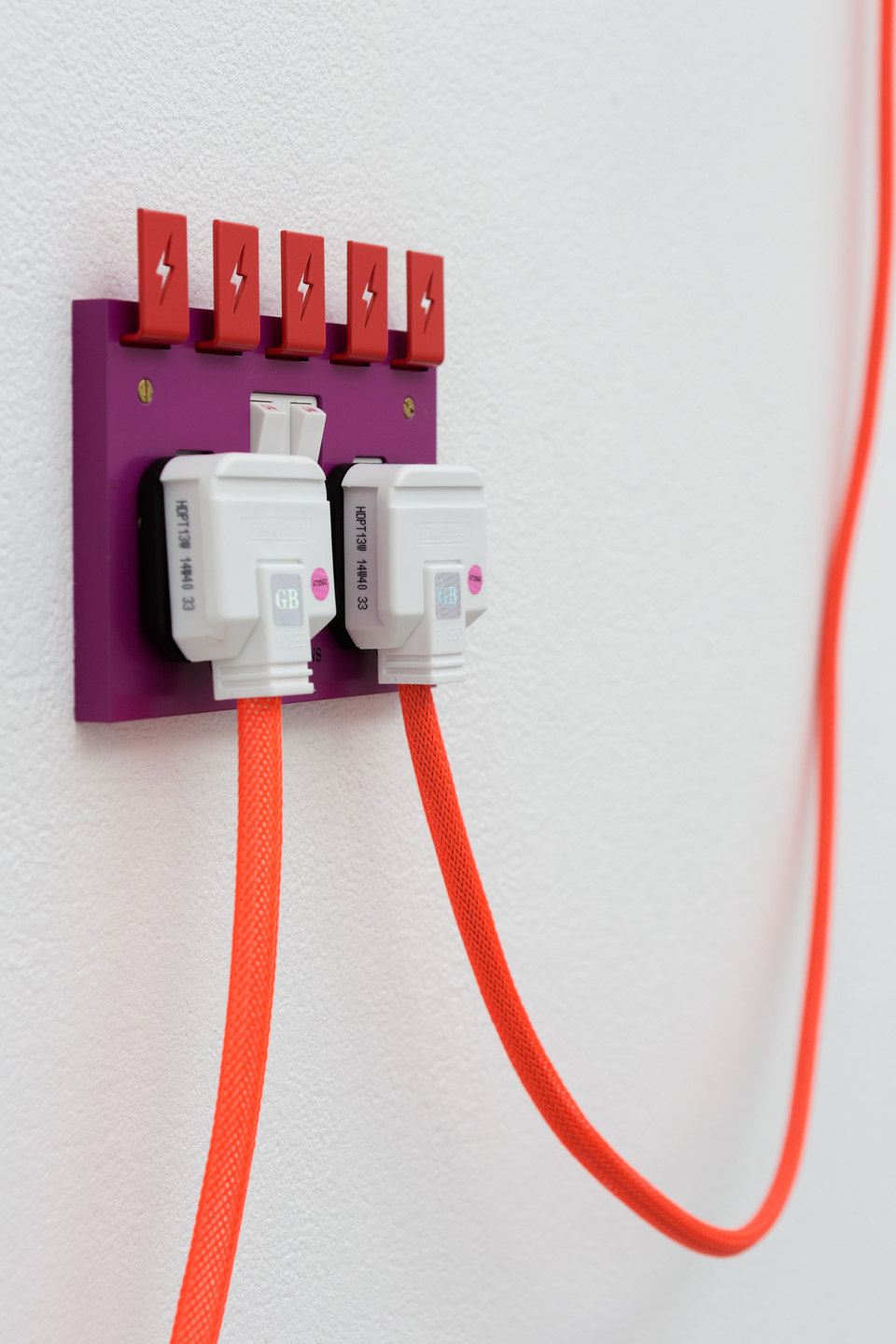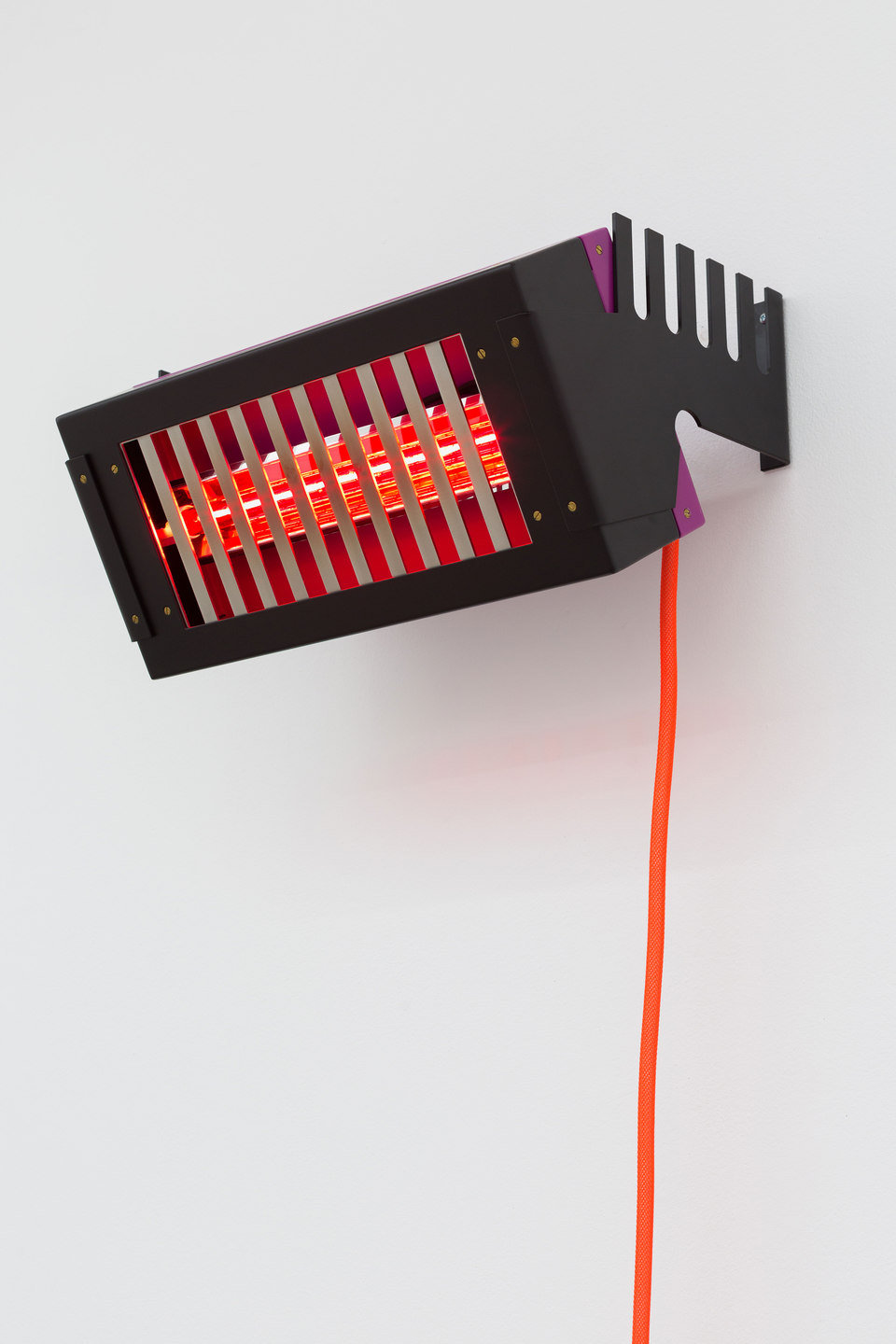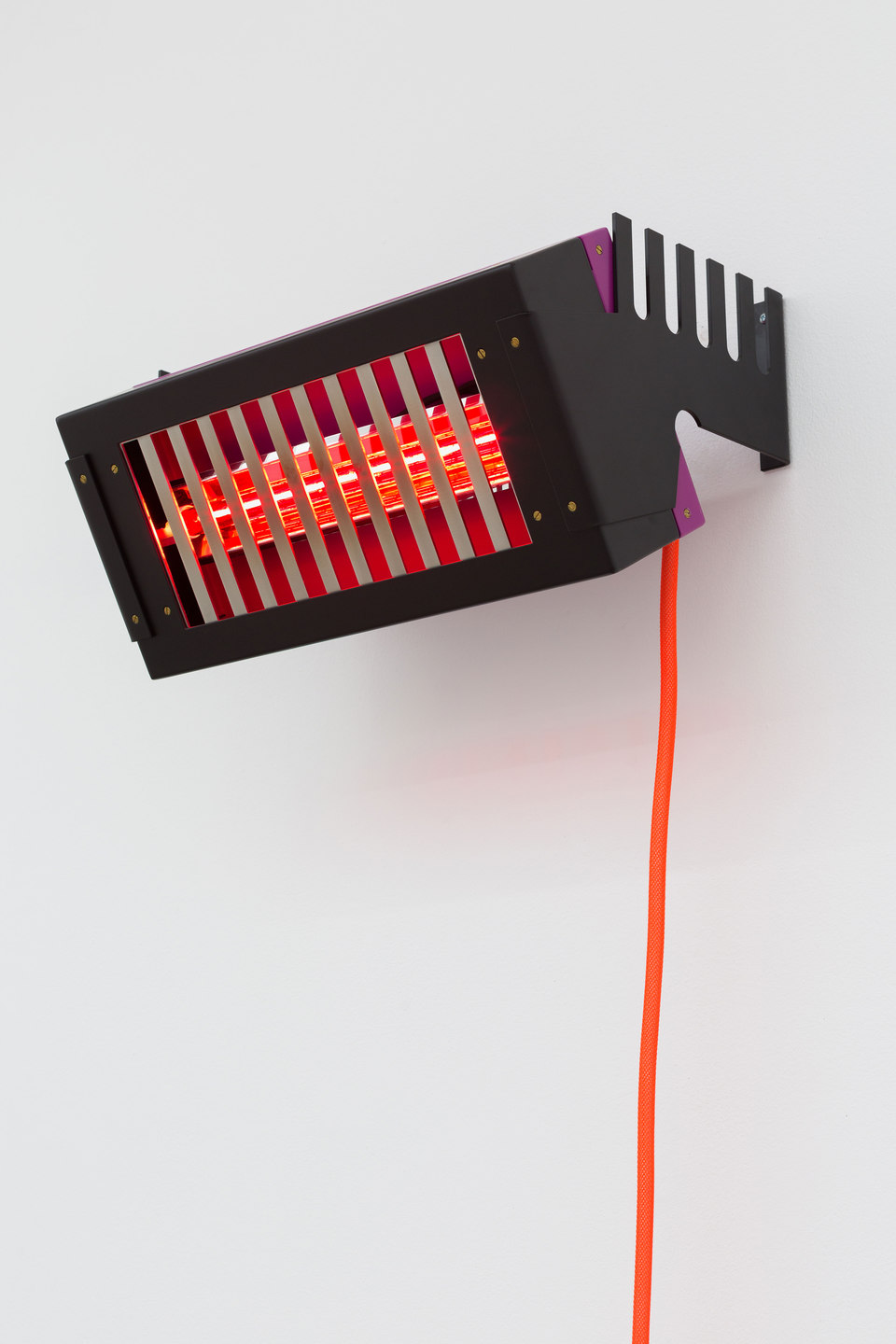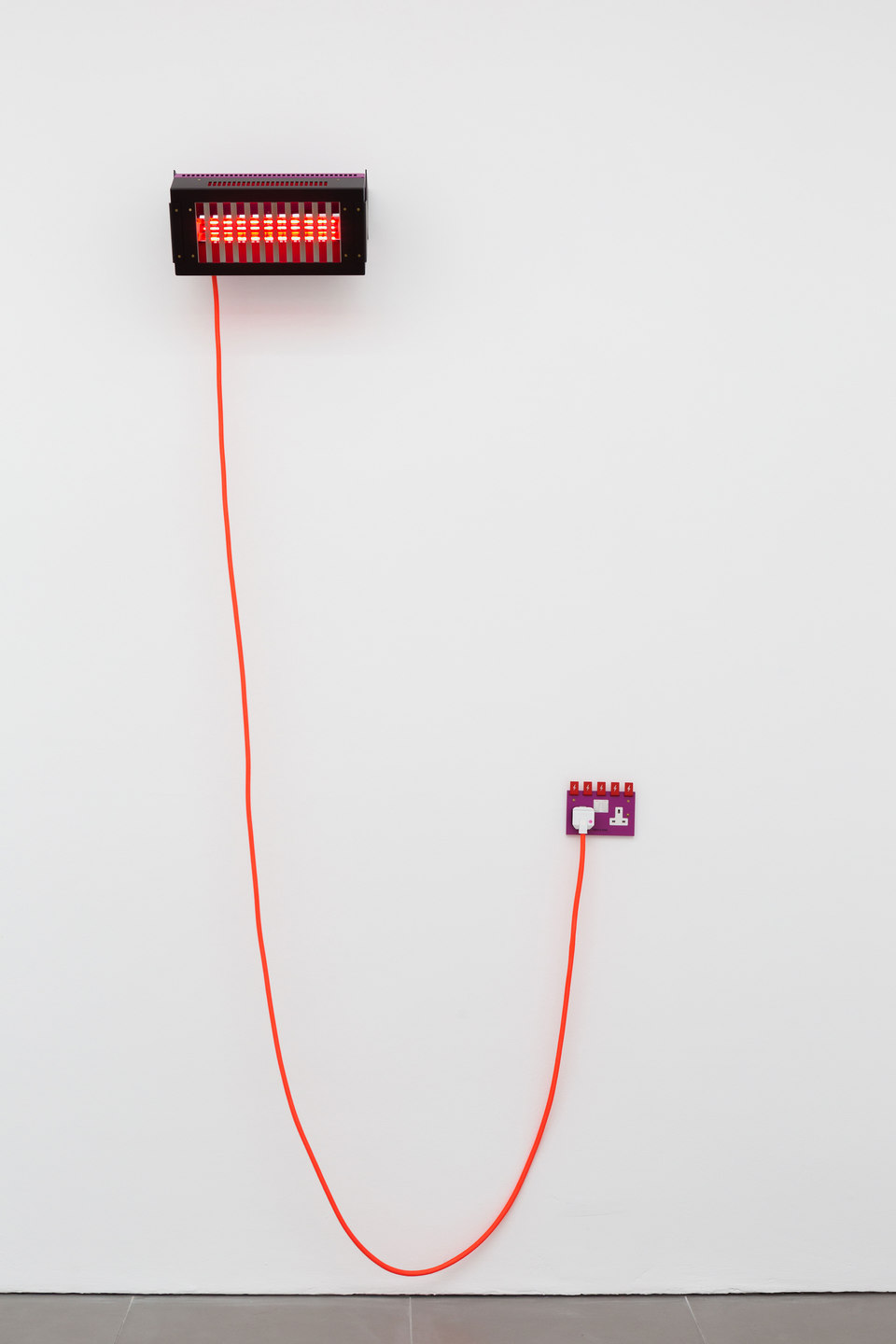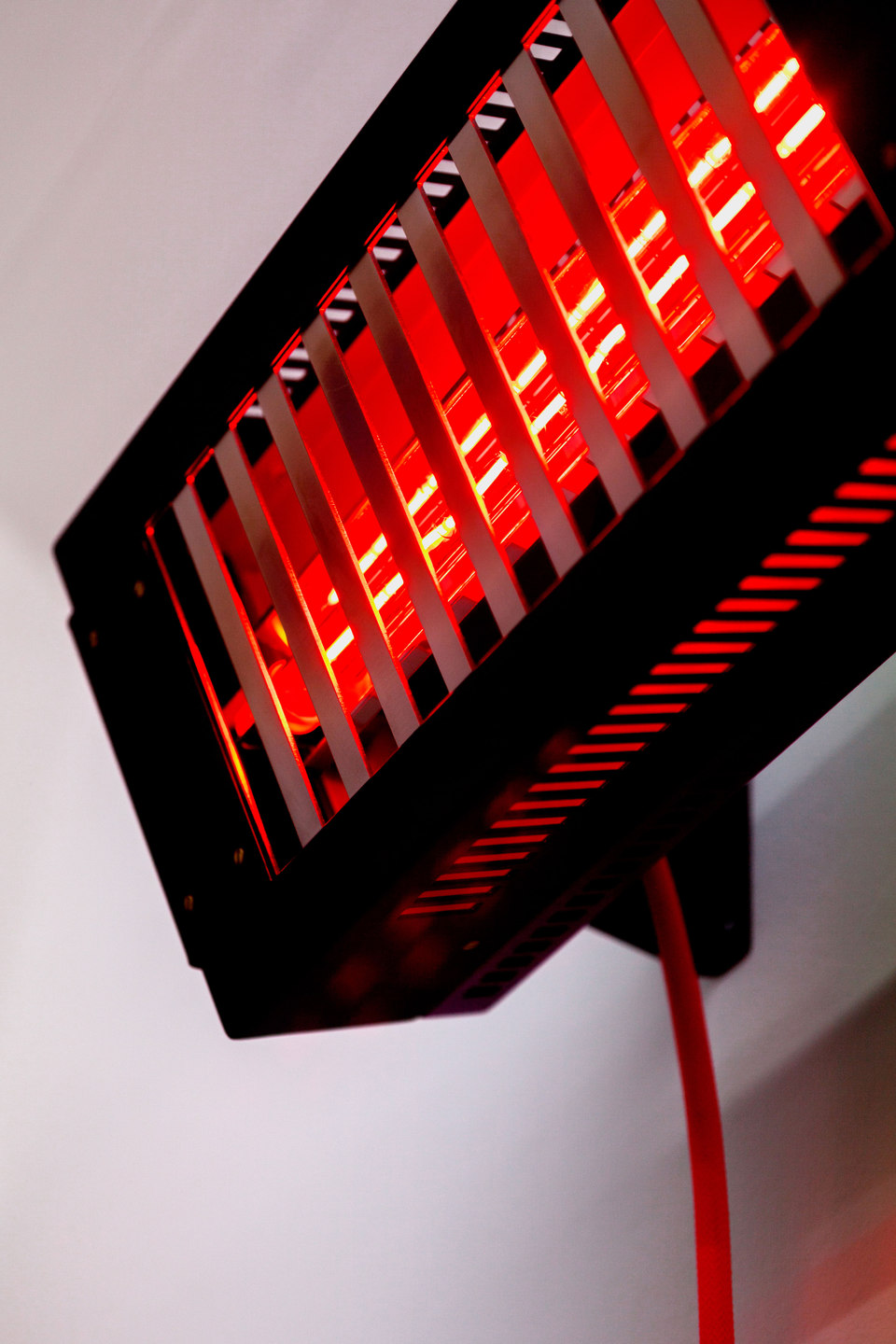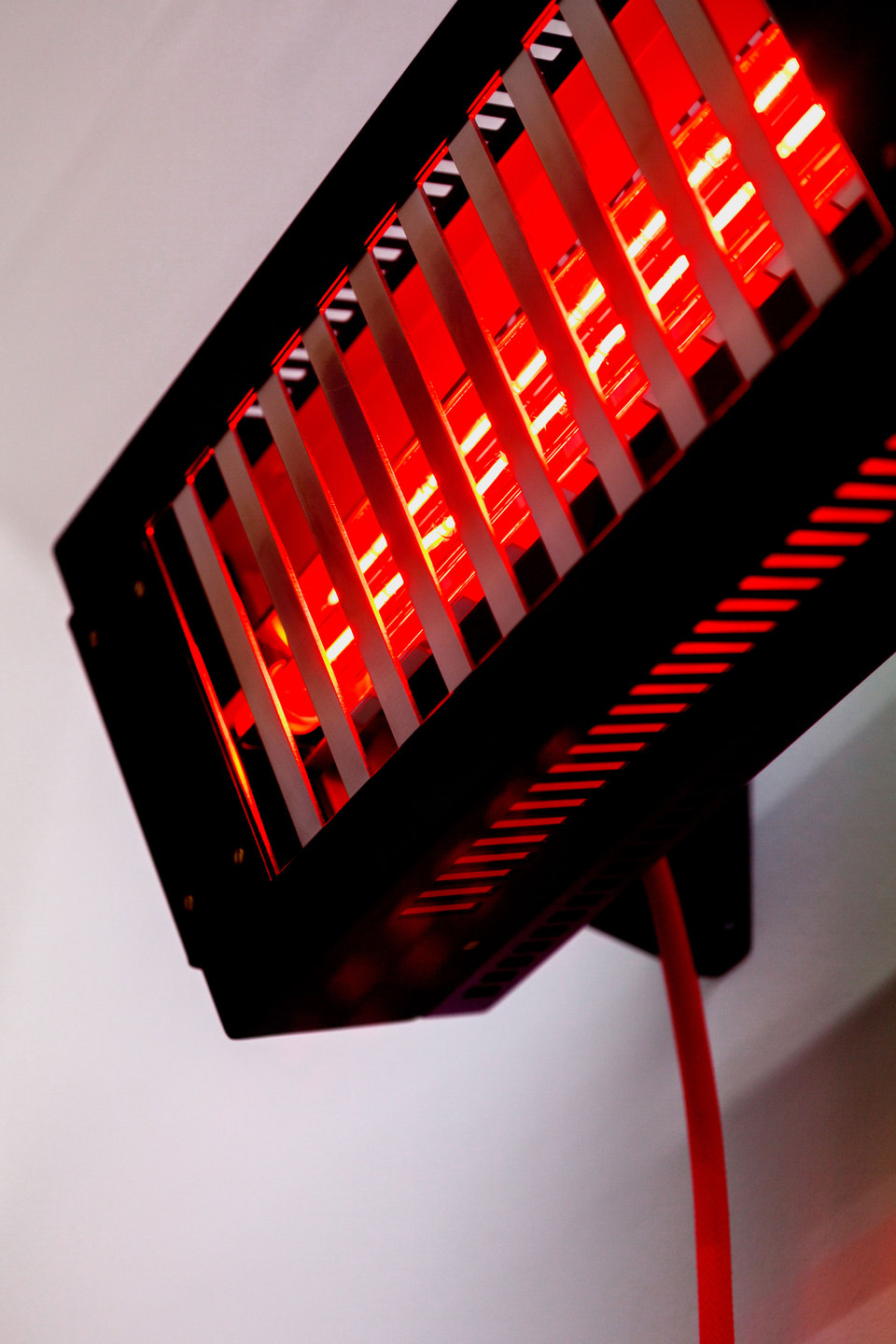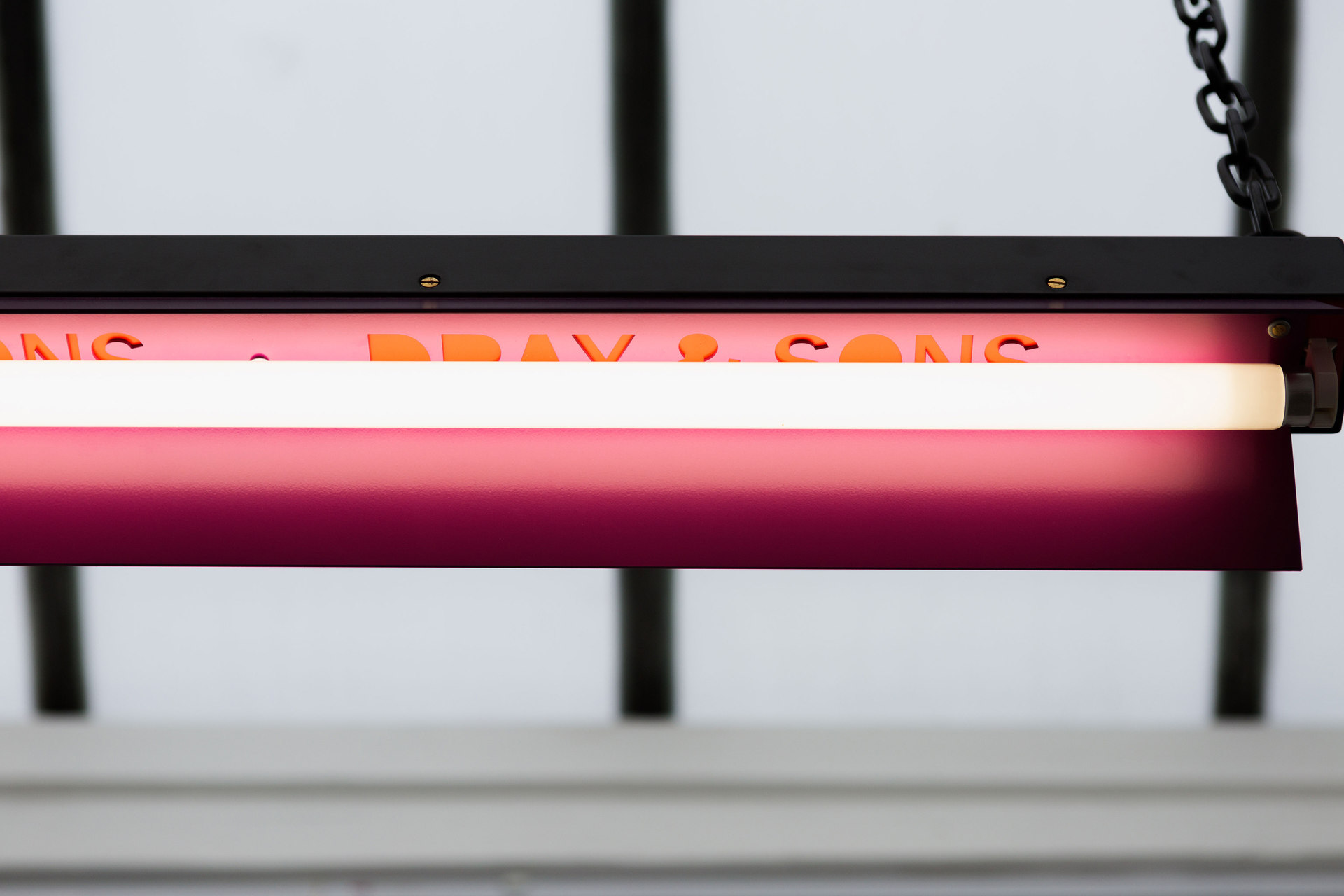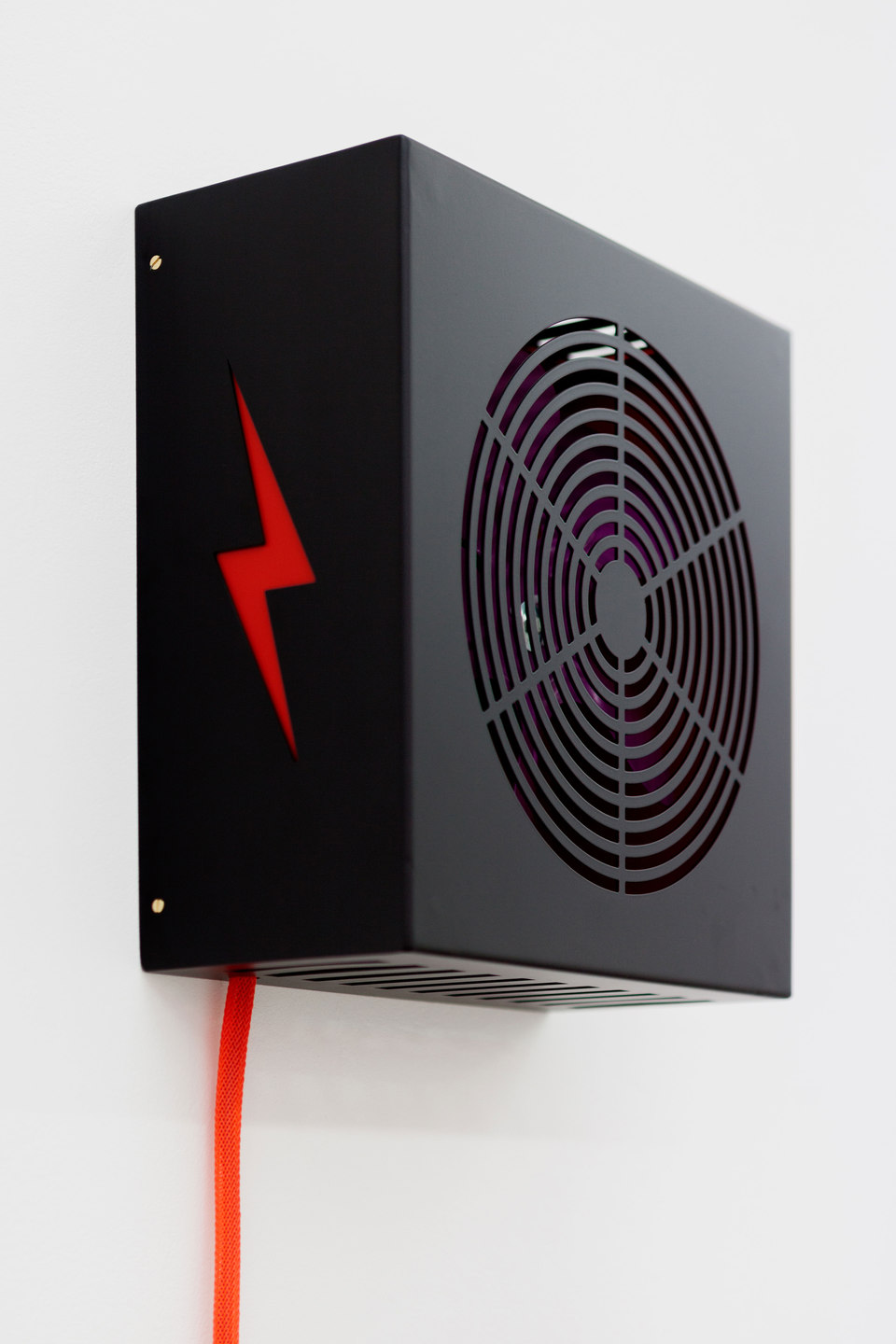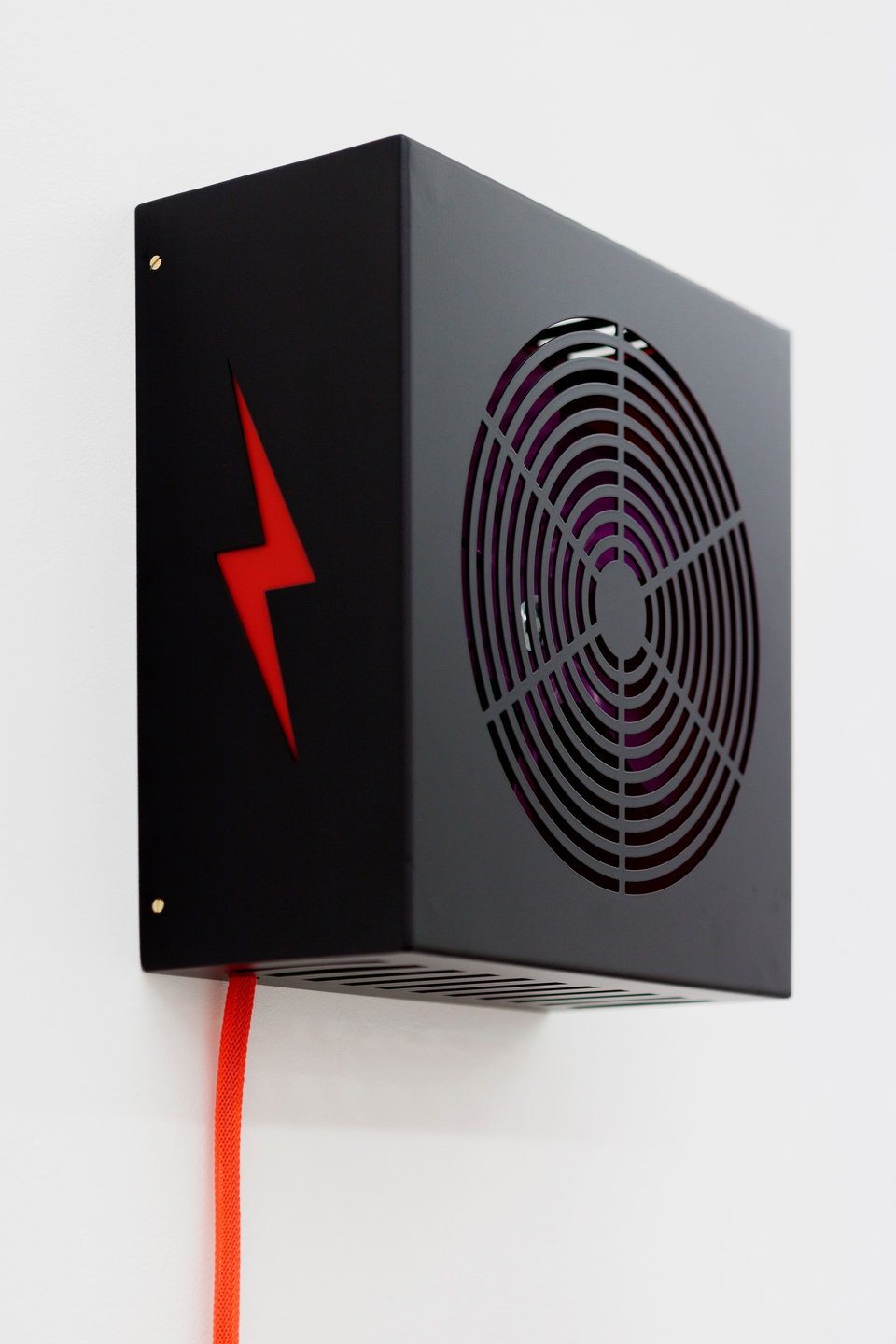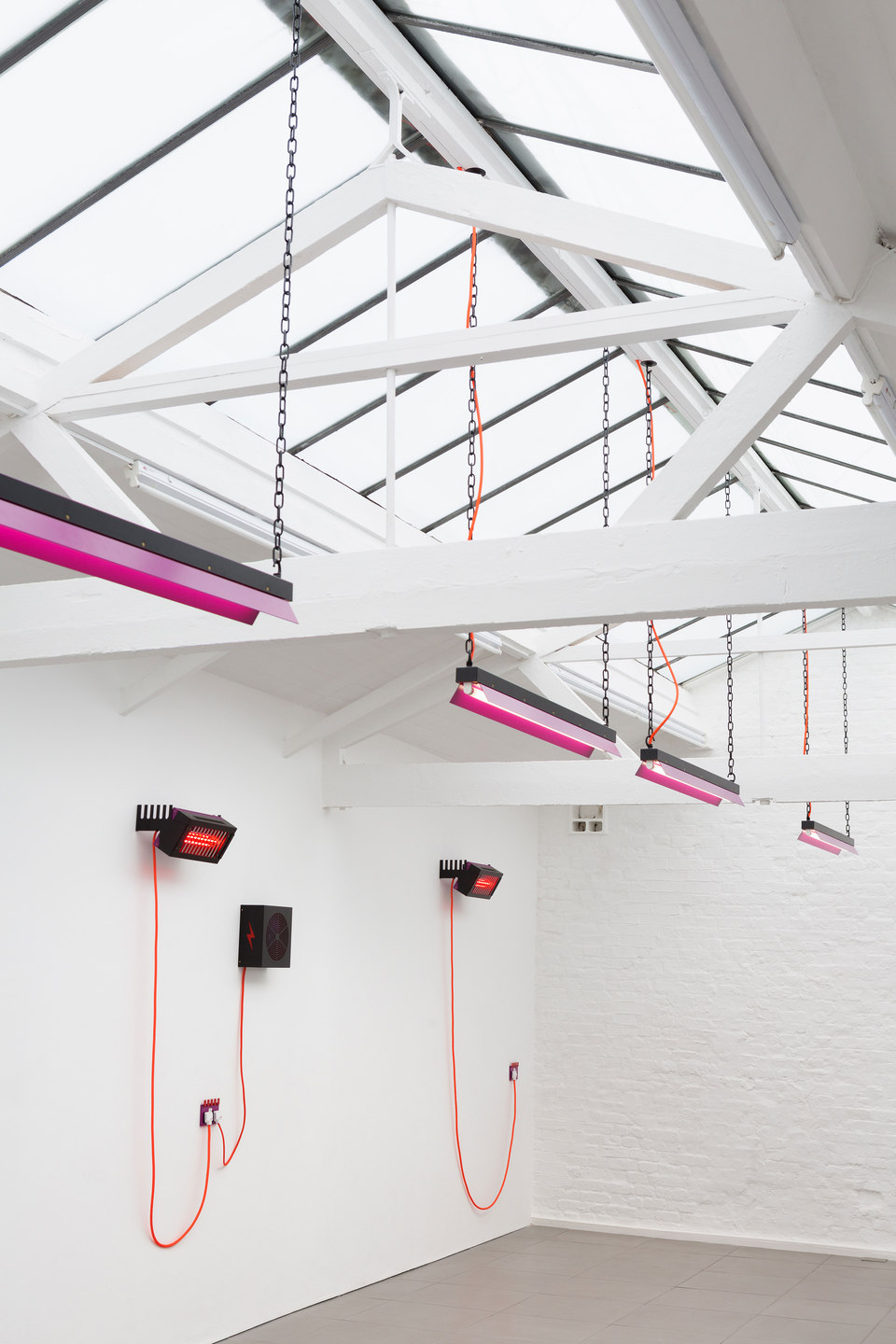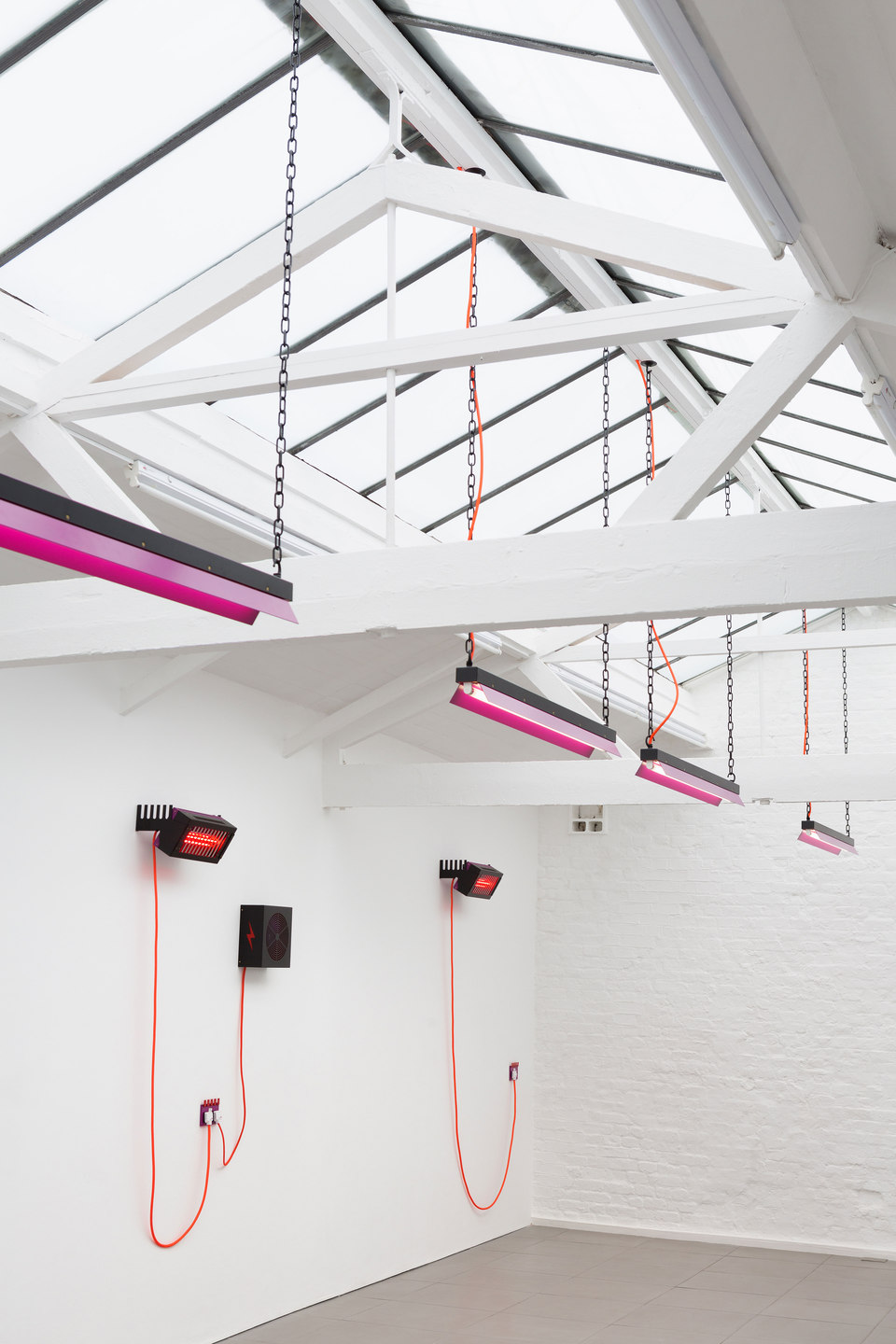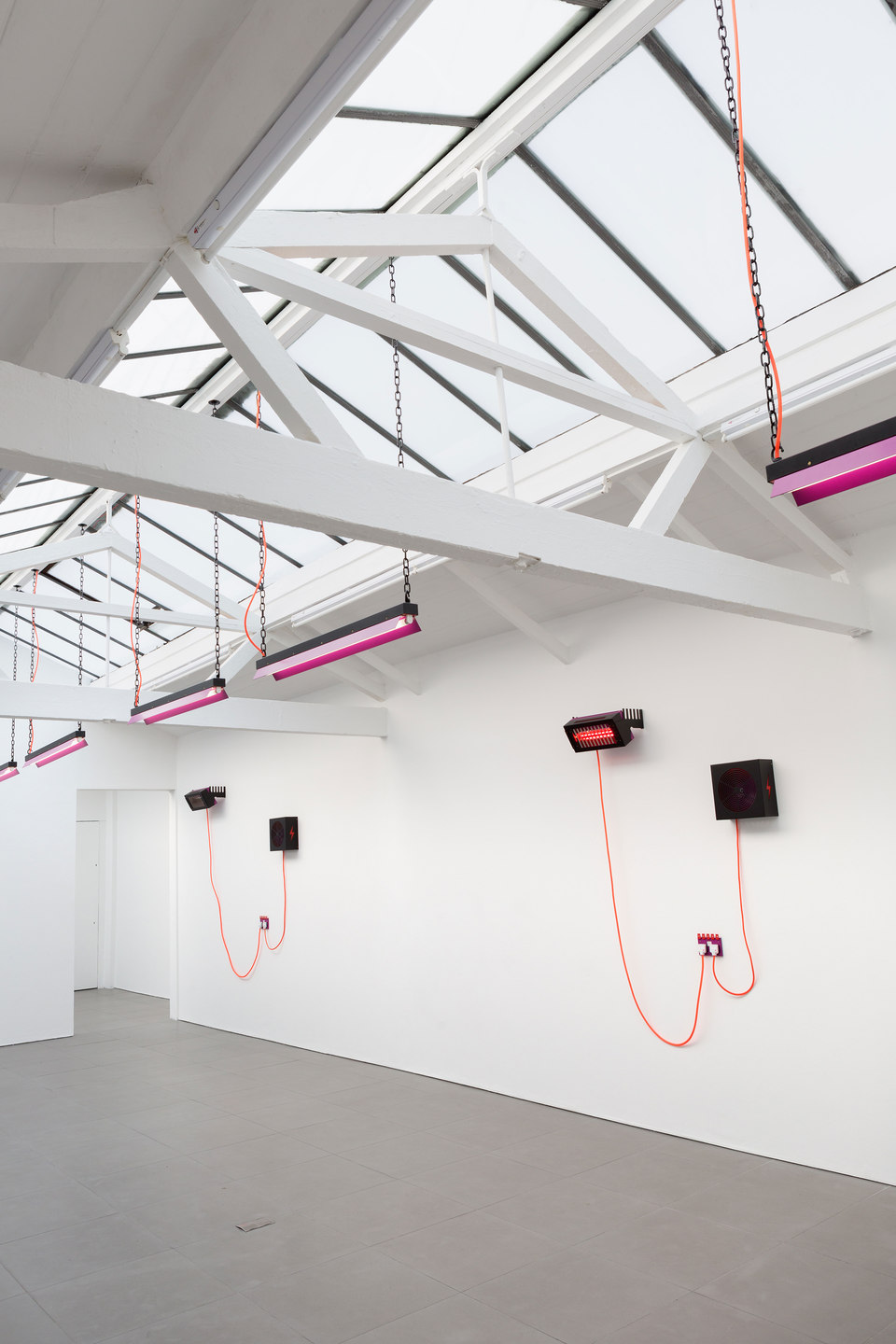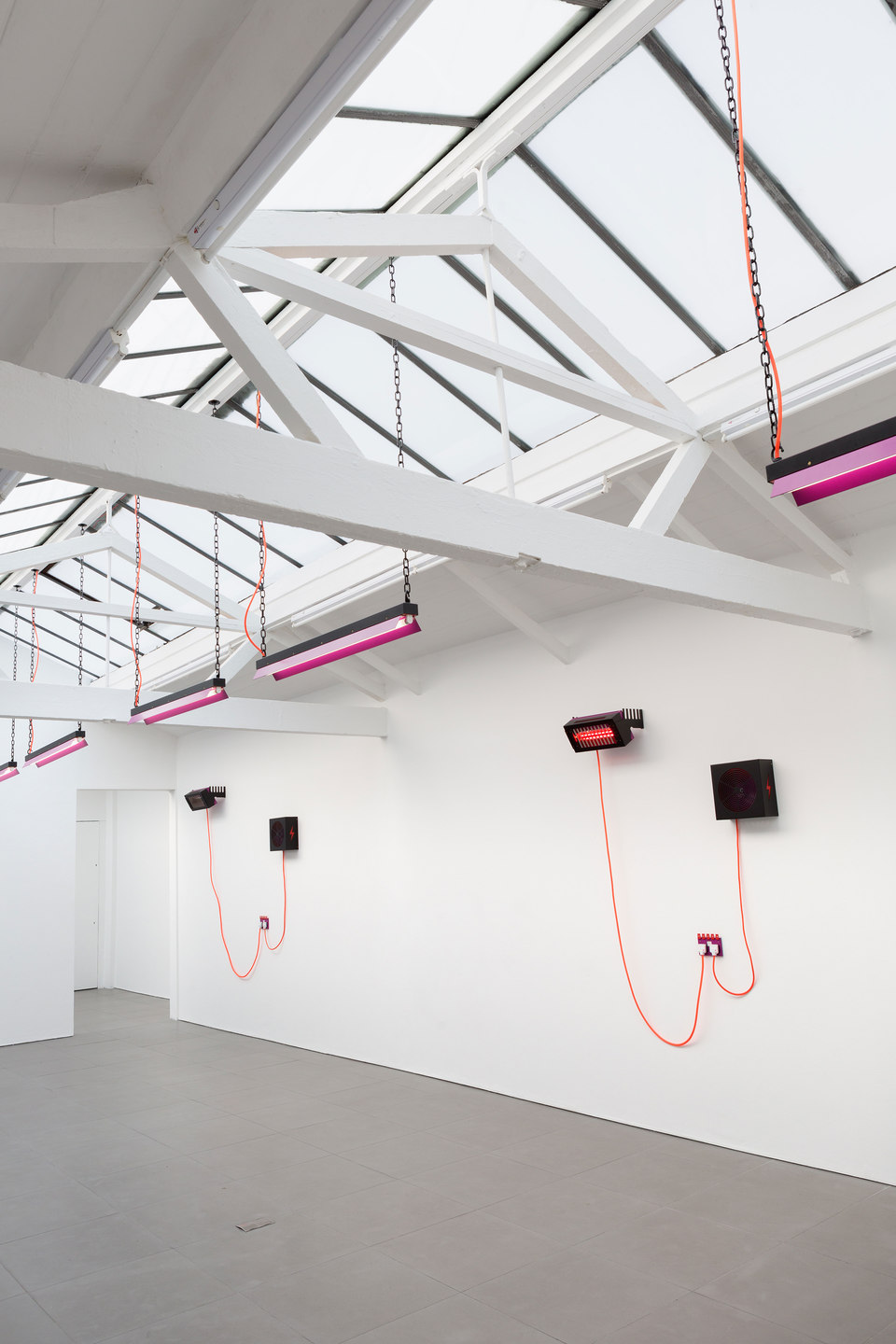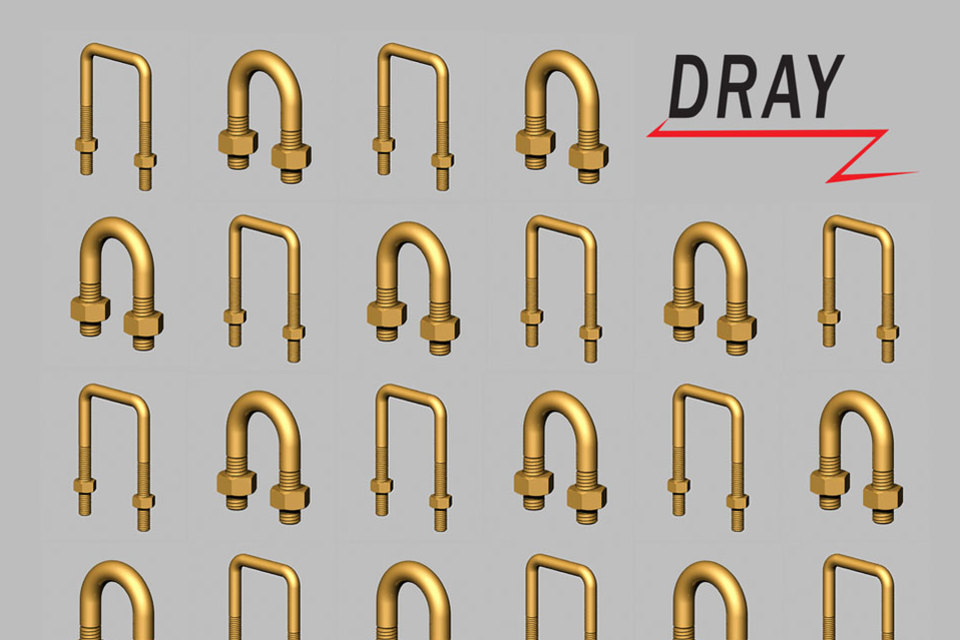
Cell Project Space presents a new body of work by London-based artist, Natalie Dray, and her first solo commission for the gallery. Dray’s work is situated between the representational strategies of manufacturing, commerce and art, using all these fields as a common site of production. The works combine stereotypical patterns of automated engineering processes and human gesture typical of computer customisation. Choosing the arena of self-taught computer assembly, Dray undermines the power positions of the individuals dominating this activity and the markets, which orchestrate the brands themselves. By adopting strategies of reverse engineering of real mass-produced appliances the artist breaks down established relationships between modes of production and creation. The objects are remodeled to produce ‘a concept’, ‘a functional ideal’, and penultimately the resolve for artistic expression, challenging the juxtaposition between human gesture and computer superiority
Presented in a formal style reminiscent of showroom presentation the exhibition quotes from the strategies of 1960’s minimalist art, although merely a point of departure for Dray. Factory-made to fit the logical electrical requirements for the gallery, artworks are treated as appliances. Dray resists specific aesthetic decision-making processes and relies on the functionally configured architectural standards for the building to reveal an existent template for the artist to work with. The structure and floor plan of the gallery become agency for the exhibition, with electrical functions of appliances synchronized and programmed, dictated by the capacity and availability of power in the room. Dray’s assessment of the works and consistent refusal to bypass function is based on a stringent protocol of security and safety standards outlined by the UK’s manufacturing regulatory body. Her methods aim to challenge the conventions of uniform engineering by hacking the hidden mechanics and functions of consumer products to reveal the reductionist strategies used by manufacturers today. By revisiting the masculine tropes in contemporary art, issues around a product’s political currency and social value, as well as the potential impact of how material and colour can effect response resonates within Dray’s application of metal finishes, detail and colour. The gallery becomes showroom in a ‘pumped up’ vision of industrial innovation and the artist’s signatory laser cut branding sits immovable inside hard-edged powder coated steel as the symbols of household and corporate efficiency are replaced by consumer desire.
Curator Milika Muritu
Natalie Dray graduated from the Royal Academy Schools in 2014. Her first solo exhibition was ‘Make Your Own Opoly’, at Project Number, London in 2013. Selected Group exhibitions include ‘Palazzo Peckham’, 2013, 55th Venice Biennale, ‘Young London’, V22, London, UK, 2013, ‘BYOB Venice’, Accademia Di Belle Art, Venice, Italy, 2011, ‘Tetragram’ for Gathering, Detroit Gallery, Stockholm, Sweden, 2011.
In conjunction with the exhibition Cell Project Space has invited, writer and poet Keston Sutherland to provide a supporting text for the exhibition. Sutherland will perform a reading from his selected works as part of a special event in the gallery on Saturday 21st February: read on
List of Works
‘Infrared Fuchsia’, 2015
Lamp holder, Ruby Jacketed Lamp, Ceramic Connector,1.5mm 3 core butyl flex, M20 Cable Gland, Rugged Plug Top, Powder coated Steel, Stainless steel
+ universal burning position
1500W
‘Cool Neutral’, 2015
5 Bladed Dynamic Aluminium Fan, Multifit Motor, 3 core 1mm Flex, Rugged Plug Top, Powder Coated Steel
+ extended life, 1300rpm
10W / 50Hz
‘Face-Lift Contactum V1’, 2015
2 Gang Double Switched Socket, Aluminium, Brass, Steel, Powder Coat
+ 2 pole and thermoset
+ 25 year guarantee, replaceable 220-250V
‘New Gen Triphospher T8’, 2015
4ft Triphosphor Fluorescents, Tridonic Ballast,
End Caps, Enamel Coated Hook/Plate, Single Core Cable, 3 way Fused Connector Block, 3 core 1.5 mm flex Powder Coated Steel
+ low mercury content, energy saving
+ almost constant lumen maintenance throughout life
36W
Generously supported by the Arts Council of England

